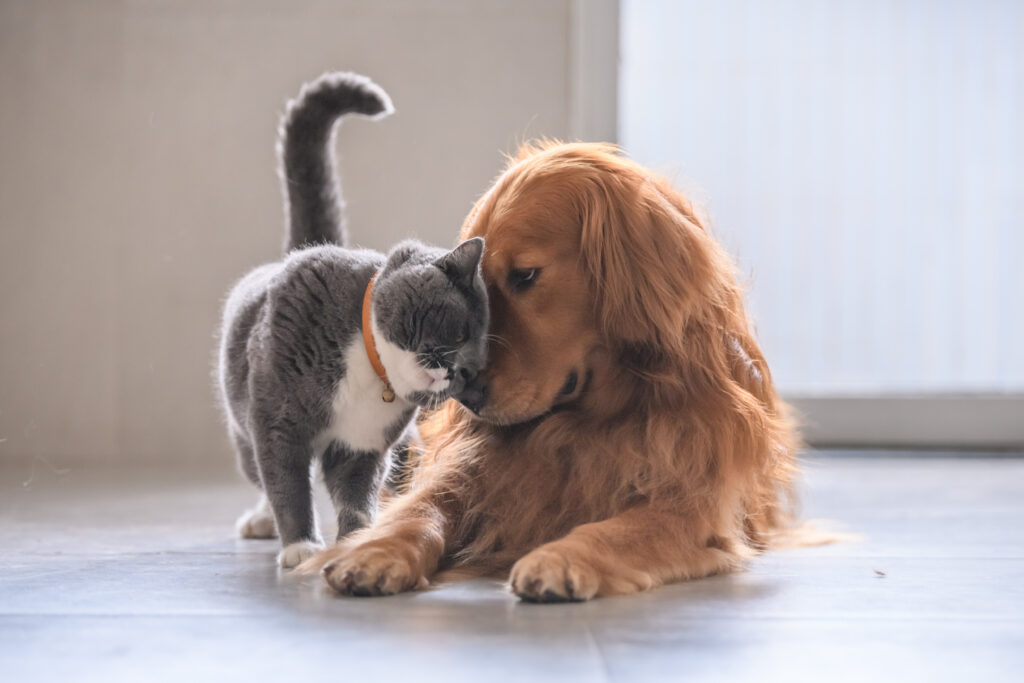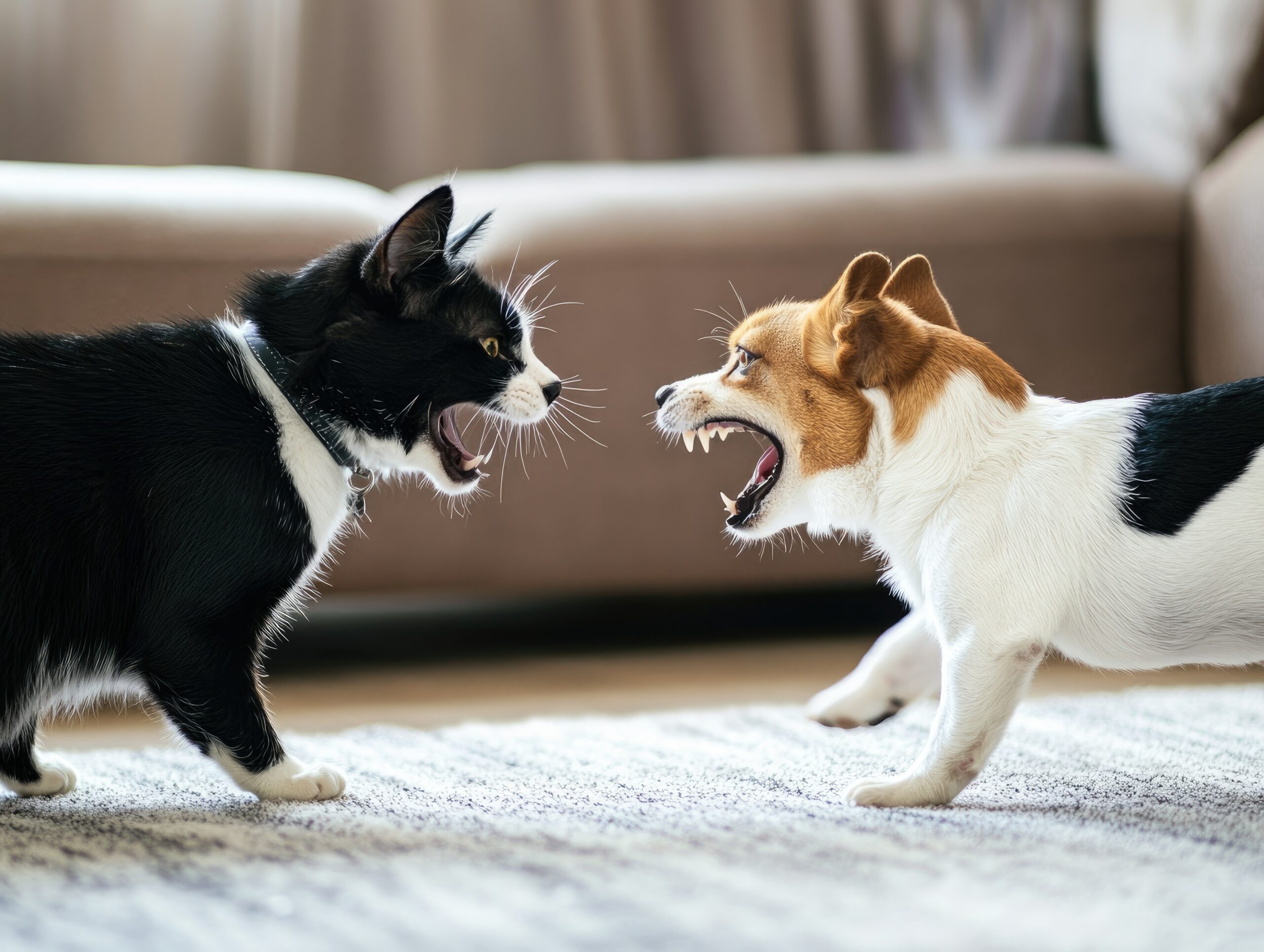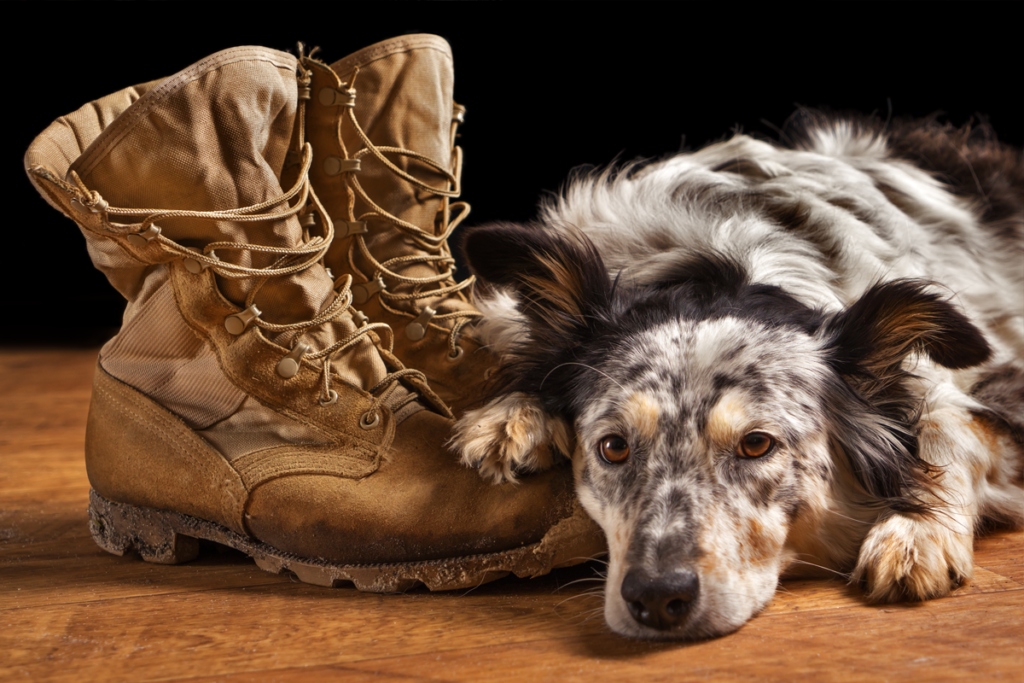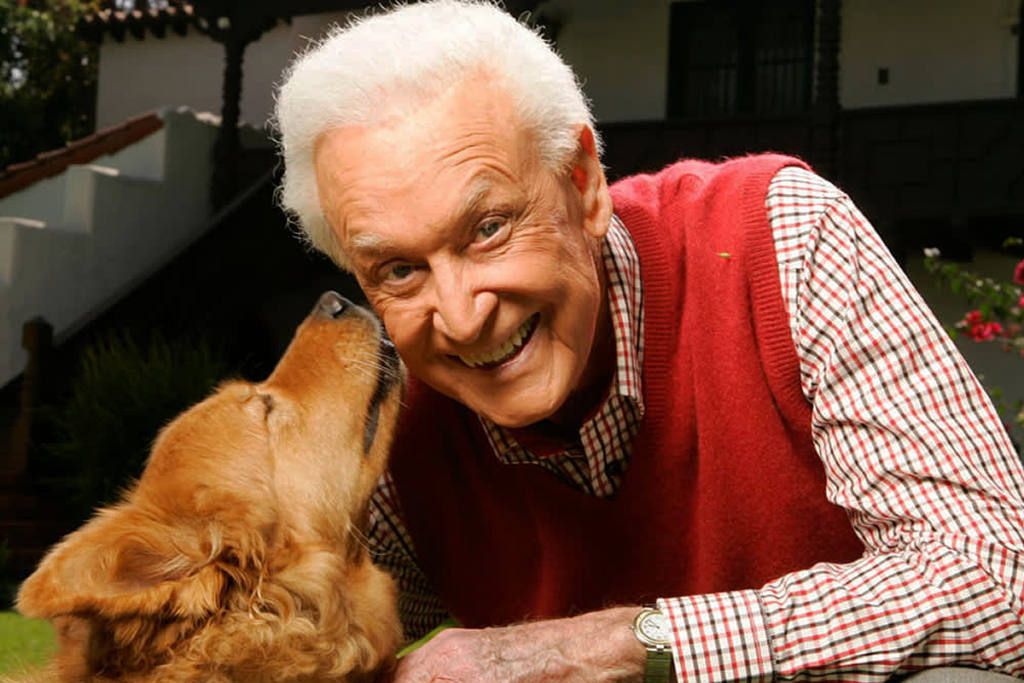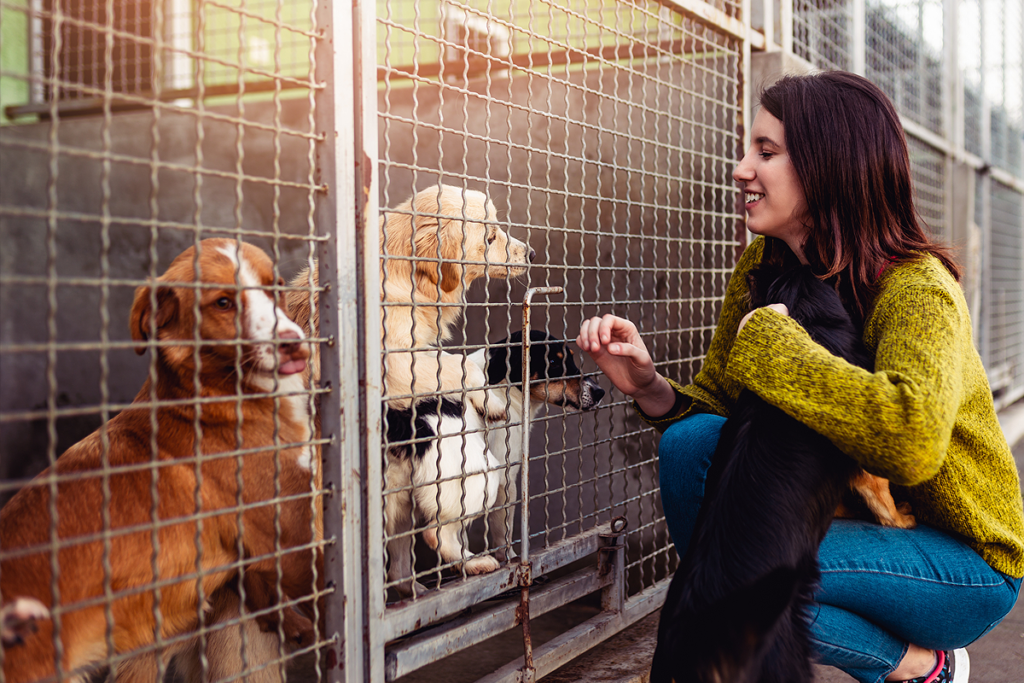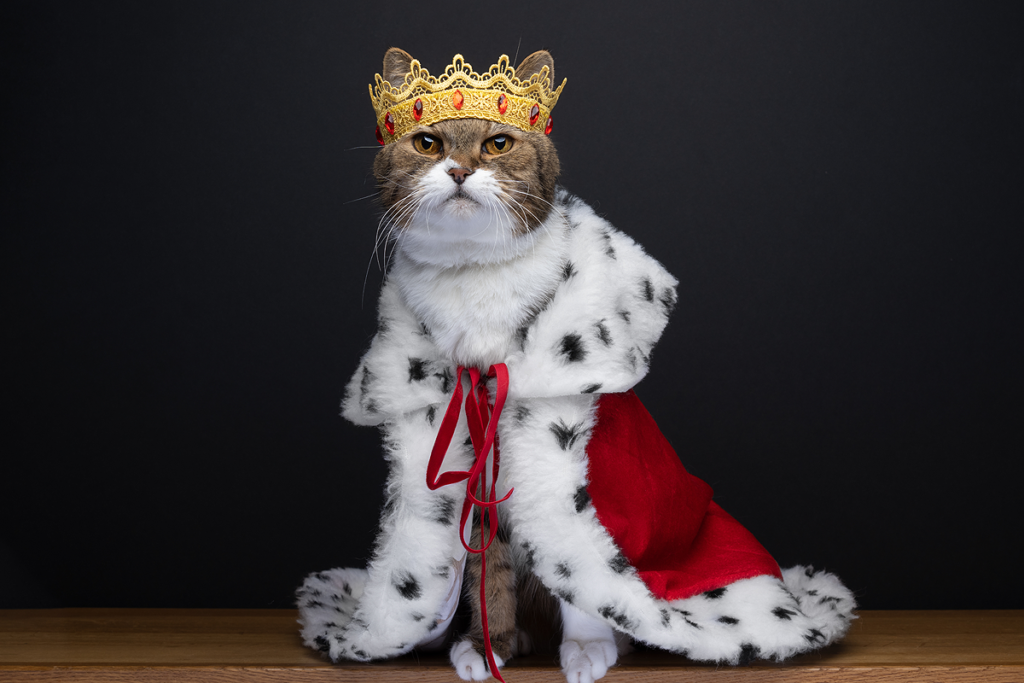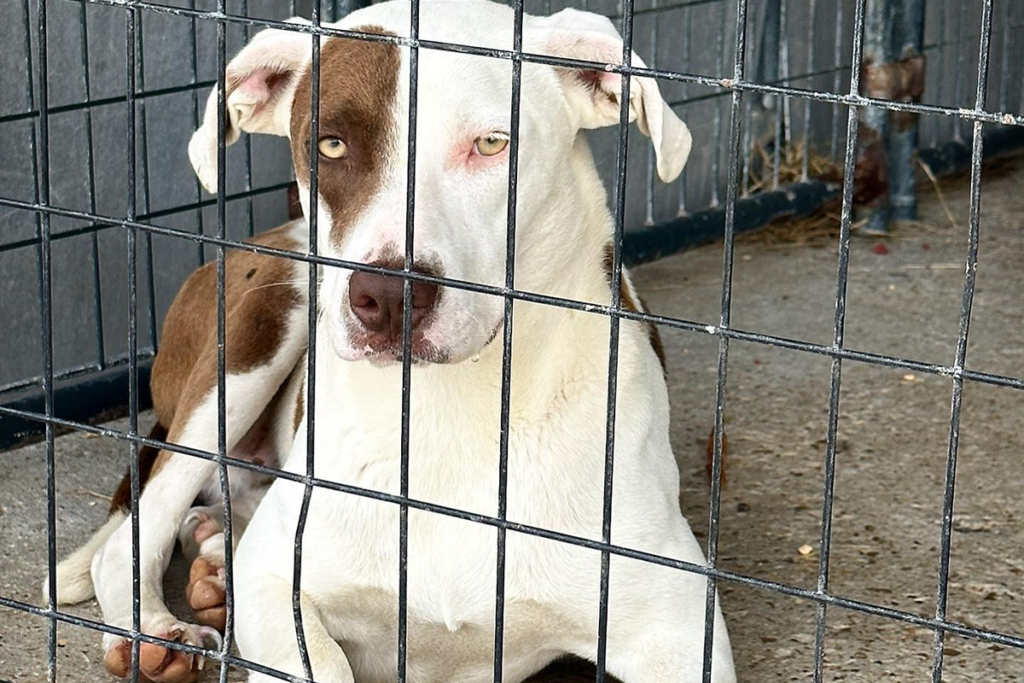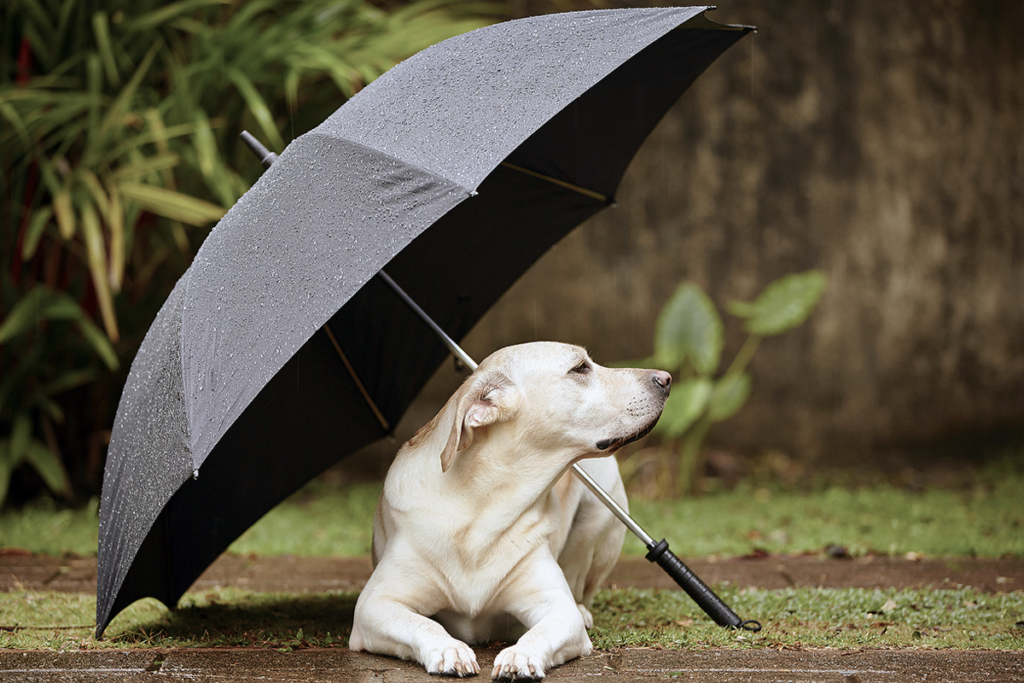Many families with single species pets are hesitant to introduce new animal to the mix and a lot of that has to do with a handful of preconceived notions about the ability of dogs and cats to cohabitate. Certainly, there are many households with dogs, cats, and even birds all living under one roof, but there was very likely a transition period and a good bit of consideration and effort incorporated into introductions and shared spaces.
If you’re a cat house and are thinking of adding some canine variety to your daily life, but might have some misgivings, hopefully this article will assuage your fears and provide some confidence in expanding your family.
LET’S PLAY CHASE
Hardwired behaviors can have a big influence on the relationship between cats and dogs. For example, dogs love to chase. Balls, leaves, squirrels, birds — basically, dogs will chase anything that moves (including cats). And cats love to run. The flight option of the fight or flight response kicks in for most cats when they’re threatened, and that means run!
So, it’s not surprising that a lot of dog and cat encounters start with a game of chase and end with a dog barking at a cat that’s escaped to a tall tree. Of course, there’s the occasional brave kitty that will stand their ground and, with a quick swipe to the nose, have the dog running, but generally speaking, dogs like to chase cats. Which is really not a great start to a relationship not matter what you’ve heard about playing hard to get.
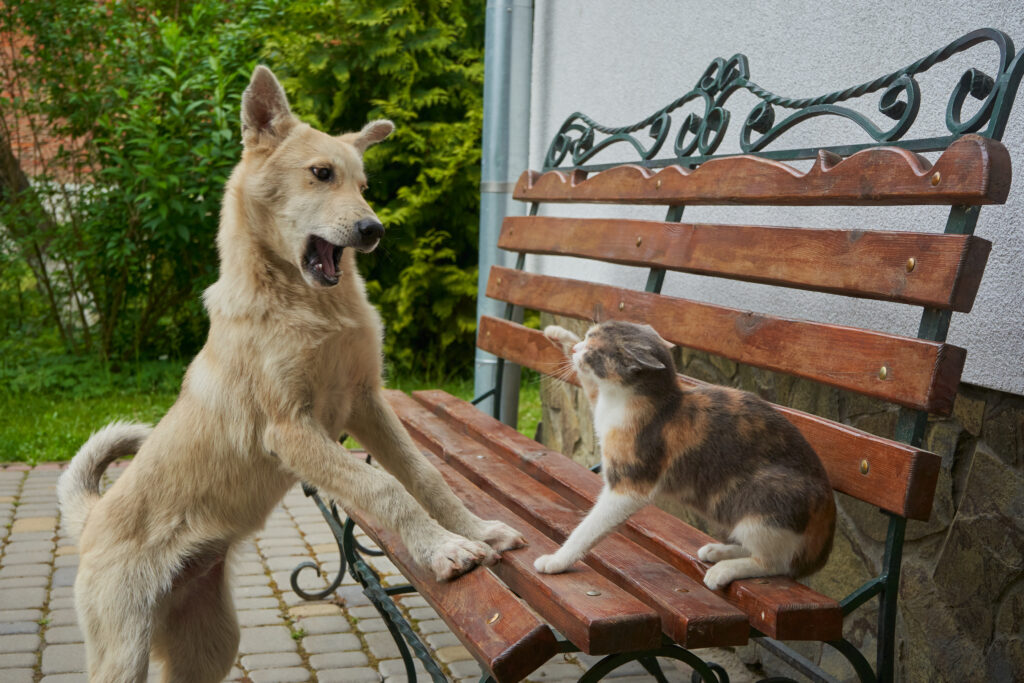
I NEED MY SPACE
The social personalities of dogs and cats can also influence who they get along with, including members of their own species. Typically, dogs are social animals who love being part of a pack (including a human pack). Cats, on the other paw, are generally solitary animals that join the party when they want to.
When you have a friendly, social dog that’s all, “Hello! I want to play. Can I lick you?” that isn’t going to sit well with most cats. But this doesn’t just apply to cat and dog relationships. There are plenty of cases where one cat is not happy that another cat has joined the family. Similarly, some dogs just don’t get along, particularly if there’s a large age difference. It all depends on the personalities of each dog and each cat.
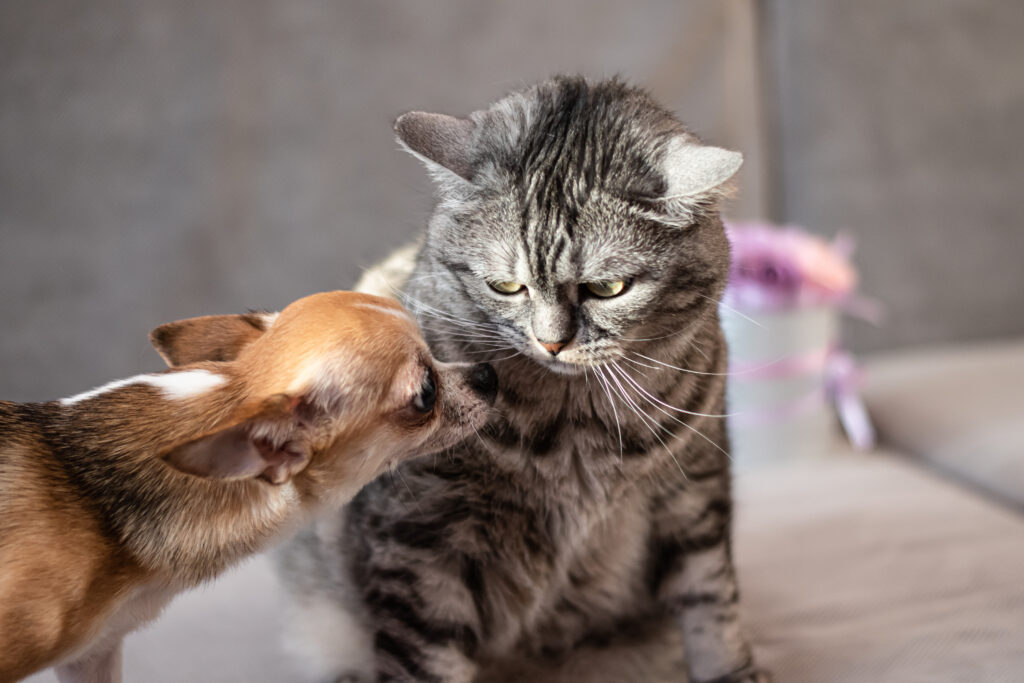
YOU GET A SECOND CHANCE TO MAKE A FIRST IMPRESSION
The important words from our discussion so far are most, typically and generally. Because while most dogs love to chase cats and cats typically prefer to be alone, there are certainly a lot of exceptions to those rules that put holes in the “dogs and cats hate each other” myth. Particularly if the dog and cat have known each other since they were young.
It’s true, dogs and cats can be best friends. There are plenty of photos and videos of dogs and cats snuggling that prove this. From dogs who took on the role of a parent when a kitten was added to the family, to others that took a little convincing that the new addition was acceptable, there are plenty of dog and cat friends out there. Or at least dogs and cats that tolerate (but don’t hate) each other. And that’s close enough, right?
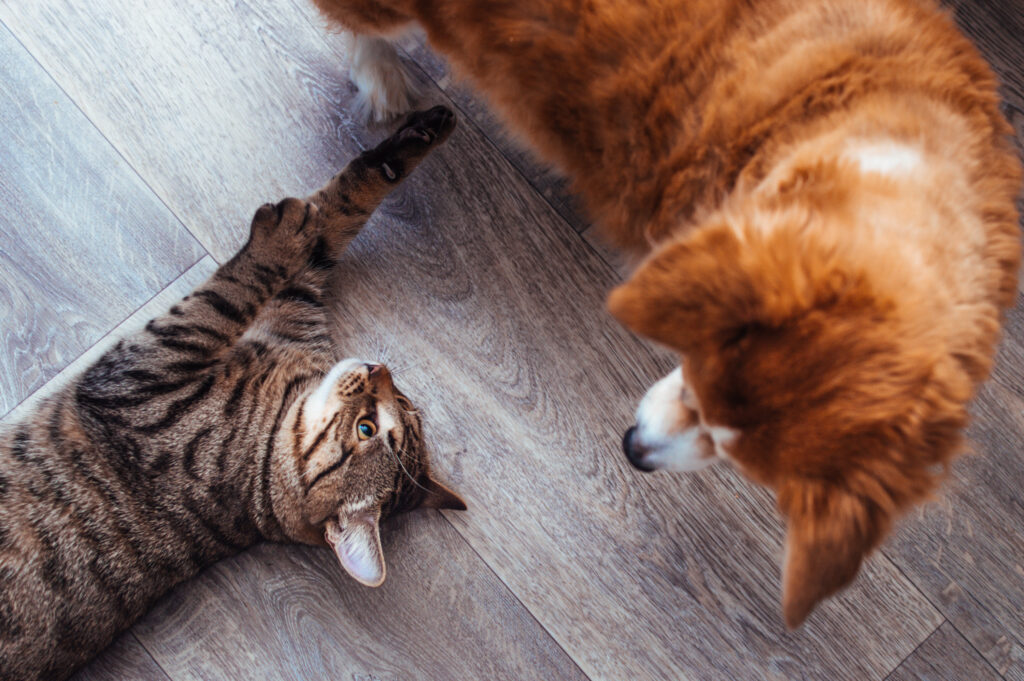
CAN’T WE ALL JUST GET ALONG?
The American Veterinary Medical Association reports that 44% of households contain a mixture of pets, which shows that cats and dogs can co-exist together under one roof! Mixing cats and dogs into a household takes some work (obviously), but the younger they are the higher your chances of success is. While you can mix cats and dogs and live together as one under the same roof at any age, it is suggested that the highest success rates come from when a cat is 6 months or younger and a dog is under a year old when meeting and learning to co-exist together; this just means there is a likelihood of fewer fights and misunderstandings between them since they are both still so young and both are just learning to explore the world around them.
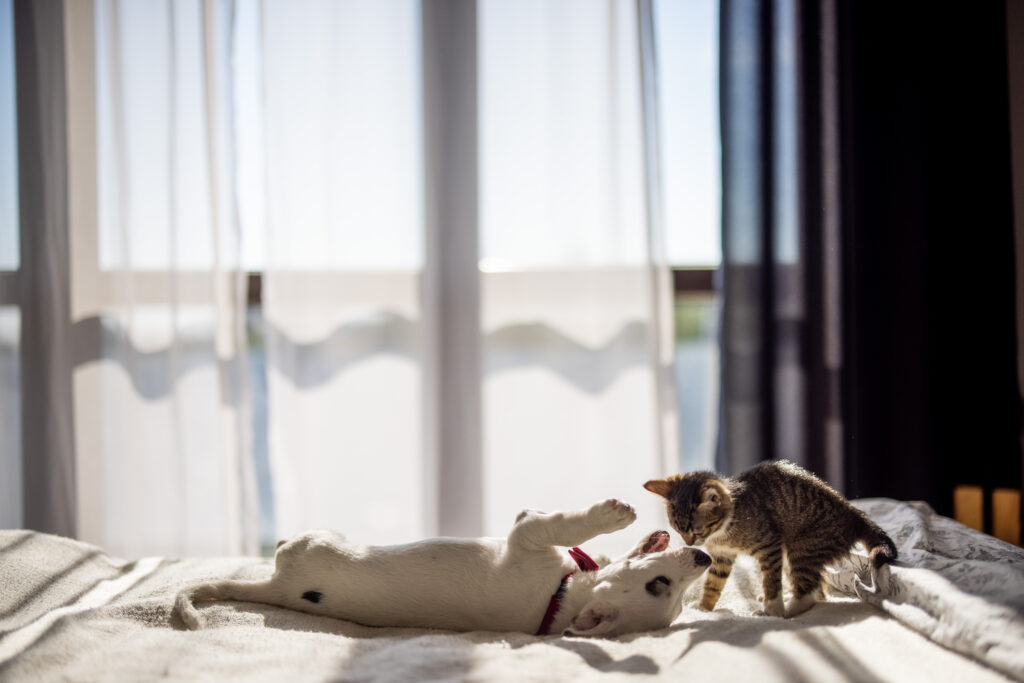
THIS IS WHY WE CAN’T HAVE NICE THINGS
Some of the fighting between cats and dogs is a result of misinterpretation of body language. It’s no surprise that cats and dogs do not use the same signals when trying to communicate, therefore some things get lost in translation, if you will, when they try to play with each other but end up fighting; this can just be a result of someone misreading a cue or mistaking an action for something else.
While things may not be so obvious to us pet parents on where the mixed signals take place, we can see in their typical behaviors how each animal can interpret the others actions as something completely different than what it was meant to be, which only adds to the trouble of them getting along.
Here is your typical cat behavior and what their body language signifies to them:
- When doing a greeting, cats will walk right at each other, tail straight up, look into each other’s eyes and blink slowly to indicate that they mean no harm.
- Cats usually run when they are scared or in the middle of a cat fight.
- There is no tail wagging when it comes to cats; they usually whip them when they are feeling aggressive.
- Purring for a cat means they are content or trying to placate someone around them.
- When cats meow, they are usually trying to communicate with their human about something they need.
Here is what your typical dog behavior consists of and you can see where things can become a little mixed up with how dogs perceive things:
- When doing a greeting, dogs will typically run around each other wagging their tails and avoiding eye contact to show they come in peace.
- Unlike cats, dogs love to run! It’s fun for them and often their most favorite way to play.
- Wagging their tail as a dog means they are excited or friendly.
- There is no equivalent to purring for dogs; to them it sounds like growling and is interpreted as aggressive and threatening.
- Dogs will mostly bark in negative situations such as when they feel threatened, bored, aggressive or anxious about something around them or something that they hear.
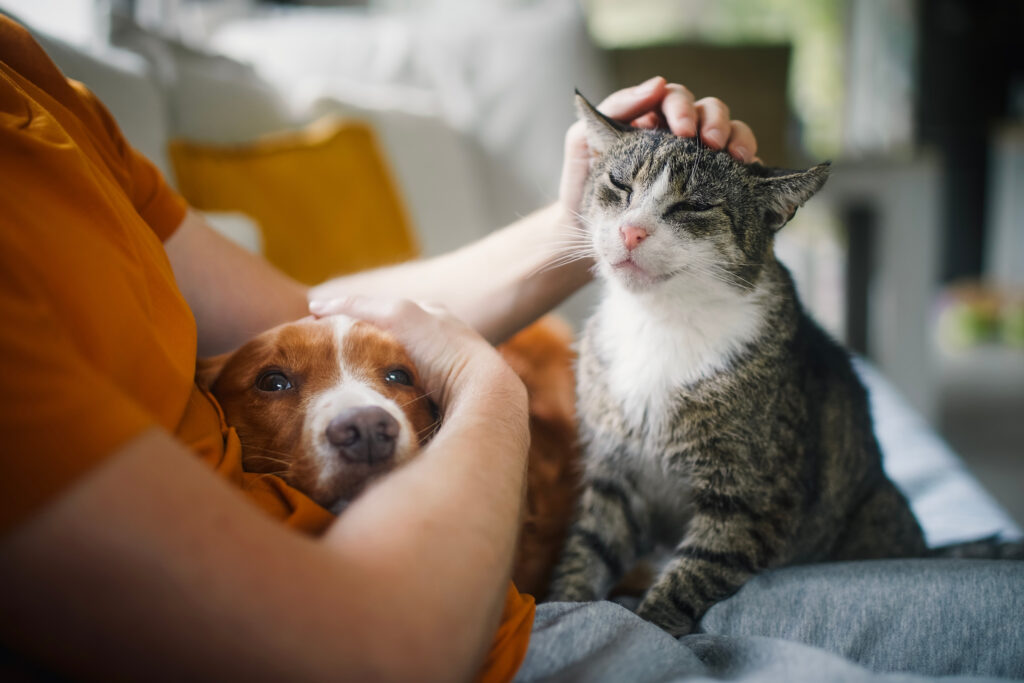
Exploring some of their body language a little more can really show us how different these two perceive things when they are doing the same actions as each other.
Tail wagging
When it comes to dogs and wagging their tails, it usually means they’re happy and their tail wagging is taken as a sign to ‘come and play!’
Cats will sometimes use a loose twitch in their tail to show discontent; so while your dog may have seen your cat ‘wag’ their tail as an invitation to play, your cat saw your dog ‘wag’ its tail as a sign of a potential attack. Whoops.
Ear positions
When a dog’s ears are forward, it usually indicates aggression while backward ears translate into the dog showing fear of something around them.
If a cat’s ears are perked forward, it means your cat is interested in the world and what is going on around them, whereas flat folded-back ears are a sign of anger or being displeased with something.
Bellies and Toes
When a dog rolls over and shows their belly, it is an invitation to you that they won’t hurt you and they want to play. We also typically teach dogs to lift their paws to shake, which they see as no harm since they are usually rewarded with praise or a treat.
When cats roll over and show their belly, it is usually not an invitation to do anything. While this action can show that a cat is relaxed or comfortable, usually a pat or a rub to their belly area can turn into them latching onto you with claws or teeth: me-owch! Their belly areas can be hypersensitive to touch for them, which is why they may try to scratch or latch you. As far as paws go, cats are not taught to shake, so when a cat lifts their paw it is usually to swat at something close to it. With a cat lifting its paw, a dog may think it’s a game until the cat swats them across their face; this can be more of a challenge towards your dog if the cat is swatting at them too.
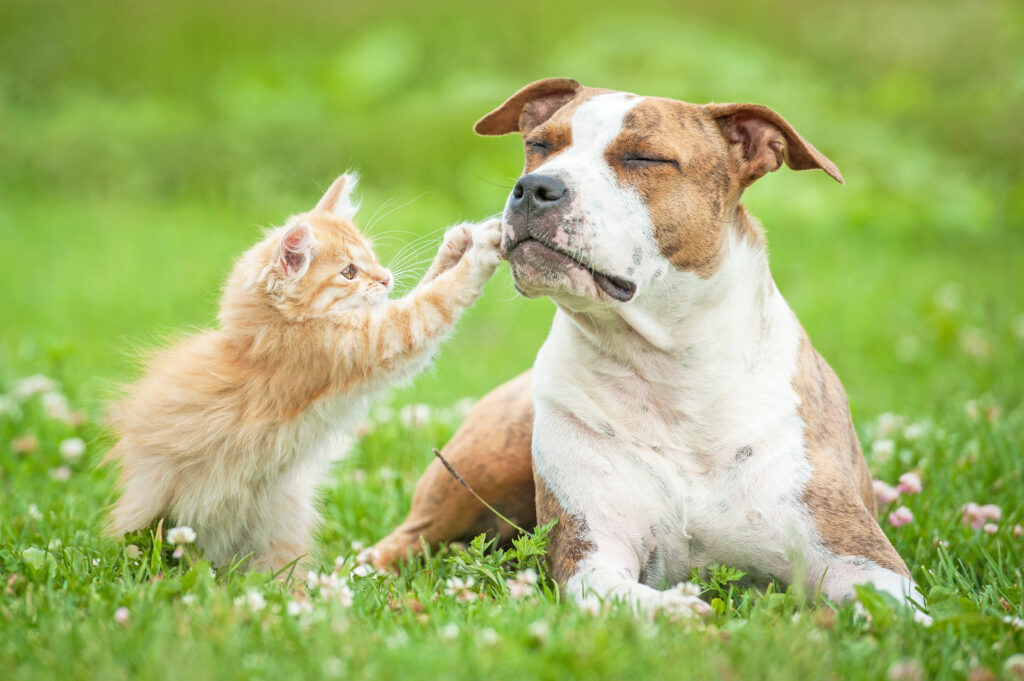
TICKLE FIGHTS?
So how do we know if they are playing or fighting?
Fur-tunately for you, we have some warning signs to look for when cats and dogs are interacting with each other to tell if things might need to be paws-ed for a little to let the tension diffuse. Here are 5 warning signs that the playing will be turning into a real ‘cat fight’ soon:
Your dog starts barking loudly or chasing your cat
+ You notice that abrupt twitching of your cat’s tail (better get Fido away FAST)
+ Someone starts growling low in pitch
+ There’s ANY hissing
+ You notice claws or teeth (YIKES!)
If their play session starts to take on any of these qualities and you need to separate them, remember to give equal attention to both, reassuring each one that it is okay and you just need to let the tension settle down.
